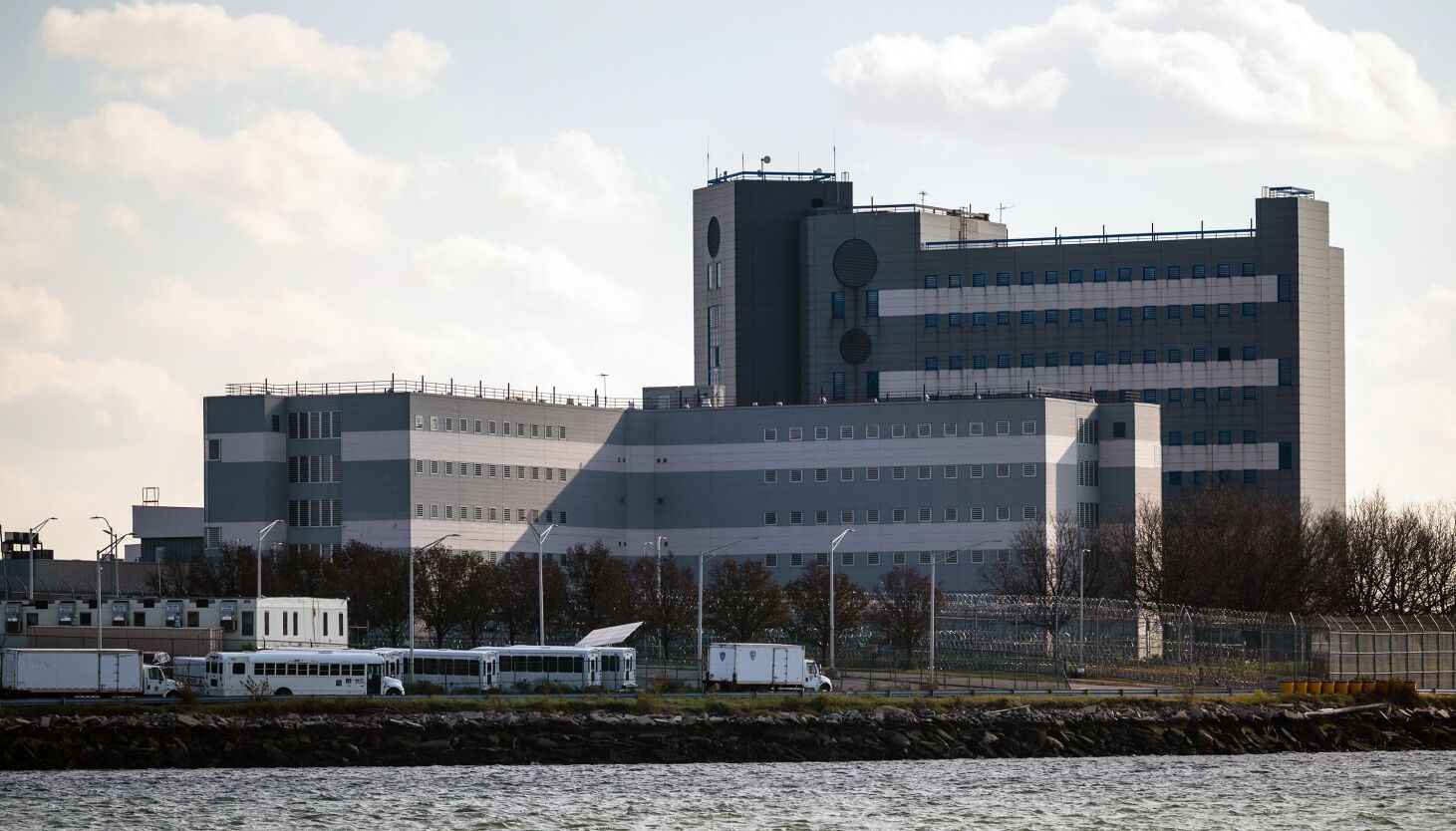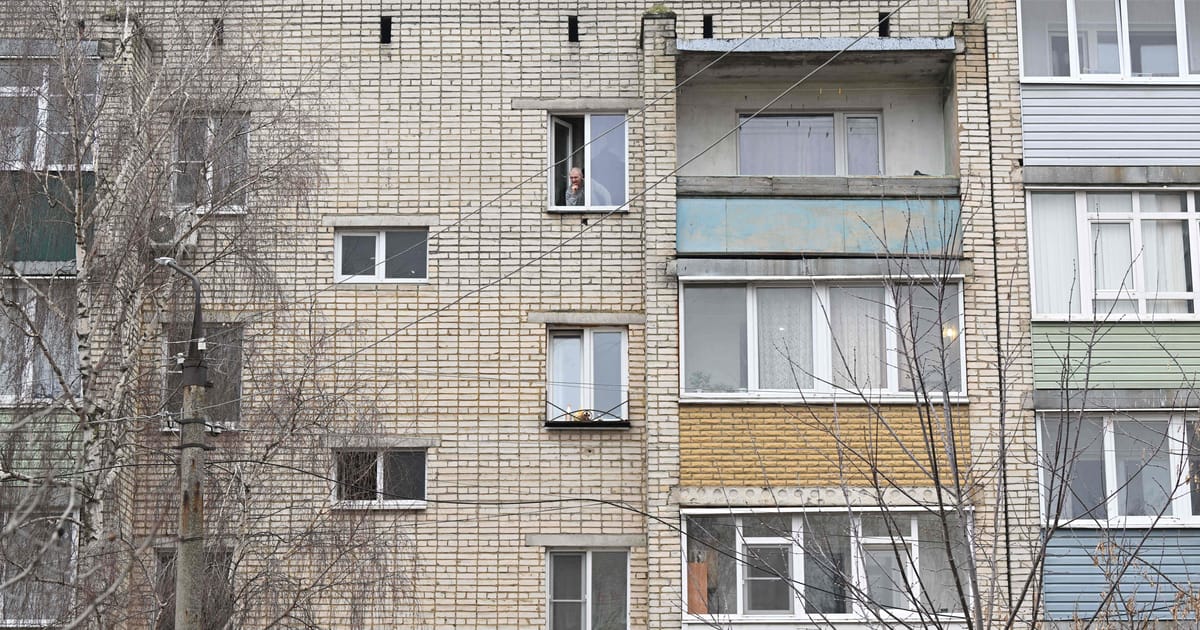At the close of Mayor Eric Adams’ first year in office, it’s not completely clear whether he wants the cells at Rikers Island to stay or go.
The ambitious City Hall plan to shut the sprawling and isolated jail facilities there — a legacy of the previous administration — is still officially moving ahead despite Adams calling the massive shift into question because of a steady rise in the number of detainees.
Yet he also spent much of his freshman year pushing state lawmakers to make it even easier for prosecutors to lock people up.
New, smaller lockups are set to be built in every borough except for Staten Island and are required to be complete in 2027 when the city will be legally prevented from using Rikers Island as a jail.
The city has begun to demolish the old jails in Downtown Brooklyn and Lower Manhattan, and last year began construction on a parking lot for a new jail next to the Queens courthouse. In The Bronx, site preparation is underway at the Mott Haven location that was formerly an NYPD tow pound.
But the plan to close Rikers calls for the city’s jail population to drop to 3,300 people — a benchmark that Adams has repeatedly said he has no intentions of reaching.
More People Behind Bars
Citing the rising jail population, the mayor is now calling for some sort of “Plan B” as the head count is expected to hit 7,000 next year, Department of Correction Commissioner Louis Molina testified to the City Council earlier this month.
“Kudos to Molina for being honest and candid — that we need to look at this plan and we need a Plan B,” Adams told THE CITY. “And, because this is costing us close to $10 billion, we can have a better use of our tax dollars and I stand with him and I agree with him. And I think the City Council must reassess this plan.”
That $10 billion figure is up from an original projected cost of $8 billion, due to inflation, according to an October report by the Independent Commission on New York City Criminal Justice and Incarceration Reform, often known as the Lippman Commission.
Scrapping the shutdown plan and modernizing the facilities on Rikers instead, however, would cost 15% more than the $10 billion price tag and “take years longer,” the report said. The smaller, borough-based jails should save the city an estimated $2 billion annually in operating costs “thanks to improved staffing ratios and fewer people in jail,” it said.
“Rikers is a decrepit incubator of violence, unsafe for staff and the huge numbers of people with severe mental illness and drug addiction it holds,” Zachary Katznelson, executive director of the Lippman Commission, told THE CITY.
“Nearly 90% of the people there are pre-trial, waiting on average 283 days for their day in court, keeping victims waiting for answers and accountability,” Katznelson said. “If the state and city can together take commonsense steps like ensuring speedy trials, providing supportive housing, and expanding the use of electronic monitoring, the Rikers population could be safely lowered dramatically.”
Still, some neighborhood activists and community leaders have done everything possible to stop the Rikers closure.
“There are dangers that are inherent to the de Blasio demolish-and-build-plan that have not been considered,” said Jan Lee, a co-founder of Neighbors United Below Canal, which brought a lawsuit challenging the review process for a new jail in Lower Manhattan.
“Yearslong demolition and construction will destabilize nearby buildings, devastate seniors living adjacent to the massive construction zone, and have vast economic consequences on local business,” Lee added. “These are only a few of the issues that will erase Chinatown off the map.”
Who’s the Boss?
The city’s Mayor’s Office for Criminal Justice (MOCJ), which is ostensibly in charge of shepherding the plan, did not respond to multiple requests seeking comment.
The agency is in flux, having been left out of several Adams criminal-justice related initiatives, and is scheduled to have its portfolio further reduced in January, as THE CITY reported earlier this month.
Meanwhile City Hall has done little to update the public about the plan: MOCJ’s latest Rikers Progress Report was published in March 2020 when there were 5,429 detainees in the system.
The jail population has since gone up to 5,729 as of Dec. 23, 2022.
“The fact that Adams is moving forward on the borough-based plan from 2019 is like the very least anybody could do. That’s on autopilot sh-t,” said gabriel sayegh, the co-executive director at the nonprofit Katal Center for Equity, Health and Justice, which supports the de Blasio plan.
The real issue is that the jail population has increased over the past year while Adams and the commissioner “pretend” they have no say over that issue, sayegh contended.
“They talk about Rikers as a thing happening to them, or happening to the city, not as something they have control over,” he said. “And that’s a sleight of hand like some hustler up at Times Square doing something with a three-card monte to steal the money from tourists.”
Meanwhile, 19 detainees died this year in Department of Correction (DOC) custody or right after release, the highest rate in 25 years.
Additionally, the number of stabbings and slashings has gone up from 419 last year to approximately 500 this year, according to Joseph Russo, president of the Assistant Deputy Wardens/Deputy Wardens Association.
That’s the highest yearly total in decades. It far exceeds the 17 similar attacks in 2007 when Martin Horn was DOC commissioner during the Bloomberg administration.
“As long as New York City liberal politics allow inmates, and for that matter criminals, to go unpunished for their crimes and bad acts we will not see significant reductions in crime or slashings in jail,” Russo said. “We need to get tough on crime. Criminals need to be punished.”
Turnaround Time
Earlier this month, during a year-end press conference focused on crime, Adams claimed: “I probably visited Rikers in my first year more than any mayor in the history of all mayoral administrations.” ”
It’s a hard fact to check, given that a dozen New York City mayors have served since Rikers first opened in 1932.
Adams also said that Molina has increased jail searches, “resulting in over 5,000 weapons and over 1,300 items of drug contraband this year” being confiscated.
Additionally, staff shortages — which have plagued the department — are down by 65% this year, according to Adams.
“All of these numbers reflect just the beginning of what the turnaround needs to be in Rikers, decades of ignoring Rikers Island, not bold enough to give the support to the boldest to do their job,” he said, alluding to the nickname for corrections officers, “New York’s Boldest.”
Critics contend that the mayor should be doing more to reduce the jail population.
City Councilmember Tiffany Caban, a former public defender who represents the part of Queens that officially includes Rikers Island, urged the mayor to better utilize the city’s conditional release commission, which can select people to be let out.
Adams could also use his powers to free more detainees who are serving shorter city sentences into work release programs under the so-called 6A program which was relied upon during the pandemic, when the jail’s population plunged.
“All of those things together would result in a reduction of the census,” Caban said.
“But we’ve seen across the board just this incredible increase over the past year for summonses and arrests for quality of life offenses,” she added. “And so what you’re seeing is the renewed criminalization of poverty of mental health, of substance use, and it’s driving up the population.”
Push and Pull
Criminal justice reform activists and advocates for the incarcerated, many of them relatives or former inmates themselves, have pushed for years to close Rikers Island’s 11 jails.
They note it takes hours to travel to courts across the five boroughs, and detainees often have to be up by 3 a.m. for the arduous trips for court appearances. It is also difficult for loved ones to access the island, which is served by just one bus line. The facilities on Rikers are aging and have been neglected for years. Some lack air conditioning or proper heating and others have busted cell doors and crumbling walls and floors.
Still, many community groups near the borough jail sites remain opposed to and upset about the plan.
In Kew Gardens, Queens, construction for the 24-story, 886-bed facility’s garage and community space has begun. Local Community Board 9 feels largely the same since it voted unanimously to reject the jail plan back in 2019, according to the board’s Land Use and Housing Committee Co-Chairperson Sylvia Hack.
Neighbors in the area, Hack said, are concerned about whether the new facility, at its proposed capacity, would be able to meet the mental health needs of the incoming incarcerated population. They are also skeptical about whether these borough-based jails could actually put an effective end to systemic failures within the city’s juails.
“If you look at the guidelines, the guidelines are wonderful: ‘You should respect people, you should respect their dignity.’ Who disagrees with that? But you don’t have enough space,” she said. “Most of what they say, as far as I’m concerned, is a fairytale.”
The new jails are expected to include more open housing units where officers will have greater visibility to see and break up fights. They are also supposed to have better space for programs.
Some in Queens remain hopeful that the city’s “Plan B” involves revamping the facilities on Rikers.
Kew Gardens Civic Association president Dominick Pistone is pushing a “Humane Alternative” plan to build smaller jails on Rikers.
“The community’s temperature is that they’re very hot under the collar about the jail,” Pistone said. City Hall has “really not listened to anything anybody said, since we’ve been saying all along that the jails are inadequate.”
As for criminal justice changes, Adams has repeatedly called on state lawmakers to revamp the changes to bail to make it easier for judges to keep people in jail while they wait for their criminal cases. He contends that it’s necessary to keep repeat offenders away from the public and has gone so far as to compile a list of so-called frequent flyers who are arrested over and over again.
Criminal justice reformers argue that what’s really needed are more robust programs that offer mental health and drug treatment, housing, and job training.
“Whenever the mayor is saying he wants bail reform, all he’s saying is he wants to put more people in jail that can’t get out because they can’t afford to pay,” sayegh said. “We are deeply concerned about this. We feel like it’s been a five alarm fire for a long time.”
“The notion of closure is slipping farther and farther away under this mayoral administration,” he added, “but the rest of the political leadership has not woken up to that fact.”




